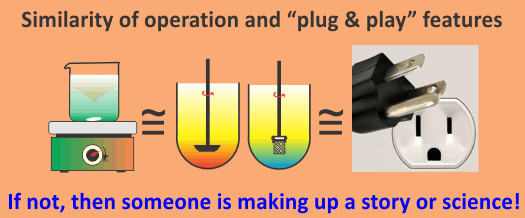Monthly Archives: February 2014
Developing a discriminatory test – nothing can be more confusing and wasting than this practice or requirement!
A discriminatory test reflects that it is capable of differentiating a bad batch/product from a good one. The question is how should one define bad vs good? In general a good product, in the context of dissolution testing, is a product that should be capable of releasing a drug from the product in the GI tract in an expected and reproducible manner. It is important to note that a drug release, or dissolution, test is linked to product behavior in the GI tract. On the other hand, it is a well-known fact that currently suggested dissolution methods/testers have no link to the product behavior in the GI tract (link). In fact, it is almost impossible to obtain reliable and physiologically relevant dissolution results using currently suggested apparatuses in particular paddle/basket apparatuses, because of the flaws of the testers (link). Therefore, by extension, it is almost impossible to have discriminatory dissolution methods to differentiate a bad product from a good product.
The irrelevancy of current practices of developing discriminatory tests, methods or testers may also be explained in another way with the following analogy. For example, one may ask if anyone has seen a discriminatory thermometer, laboratory balance, pH meter, spectrophotometer, chromatograph etc. The answer is, not really; because all one does, by using a tester/method, is to measure the value of the parameter. The test/method is used only to determine value/result and the scientist/analyst uses this value for interpretation of the characteristics of the product. For example, one never says, requires or develops a discriminatory thermometer, when one monitors the temperature. One uses the thermometer to measure the value (temperature) of the corresponding parameter (body temperature). The thermometer never tells if a person has a fever or not. It only tells the temperature, but a physician interprets it as a fever or any other deviations. So, why does one have discriminatory dissolution methods or testers? It is simply to market the made-up science and flawed testers. Developing of a discriminatory test/method, as practiced or required, has no meaning and serves no useful purpose. One requires a dissolution tester or method to measure dissolution characteristics of a product reflecting its in vivo dissolution characteristics. Once one has such a method, it automatically becomes a discriminatory test. One does not require any extra effort or steps to make it a discriminatory test. The dissolution results thus obtained using such a method/tester would reflect dissolution characteristics of a product and then the analyst/formulator is to decide whether the product is of acceptable quality/characteristics or not. Continue reading
Are people using drug dissolution testing for product development? Not really!
Title of the post is a bit catchy, but is factually 100% correct, i.e. no one is using dissolution testing for product development, as explained below:
Suppose a formulator would like to develop a product having a certain dissolution characteristic/profile. The product is to be developed for human use; therefore, the target dissolution characteristic/profile should be relevant to humans as well. With this objective in mind, the formulator proceeds to developing a product by mixing some ingredients/excipients and compressing it into tablets, referred to as product “A”. However, the formulator realizes that perhaps all he/she is required to do is to compress the pure drug (powder) into tablets which might give the desired dissolution characteristic. So, he/she compresses the drug powder into tablets as well, referred to as product “B”. Now the formulator would like to determine/compare dissolution characteristics of these tablets, i.e. if they are able to provide the desirable characteristics or require some adjustments. For this purpose, the formulator requires a dissolution test/method (apparatus and associated experimental conditions). Unfortunately, currently no such test/method exists. Therefore, a formulator cannot determine dissolution characteristics of the products, and thus cannot develop a product having a desired characteristic. Continue reading

